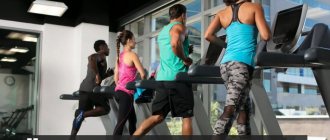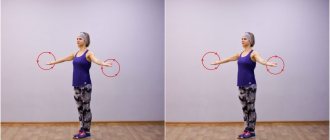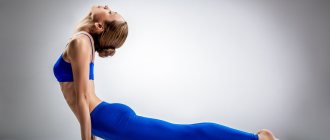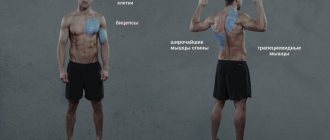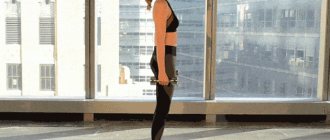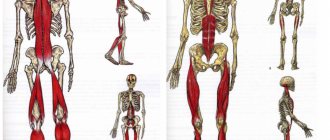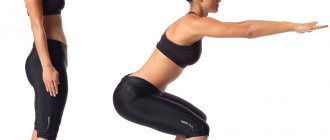Weakness of the ankle ligaments is indicated by signs such as instability of the leg, especially in heels, frequent sprains and dislocations, pain in the thumb and middle toe even after minimal load. Usually the patient tries to solve an existing problem at home by applying pain-relieving ointments. The discomfort goes away, the injured tissues heal, but the problem itself does not go away, and the injuries recur. In order for recovery after injury to be complete, you need to know how to strengthen the ankle joint. We offer several simple ways to strengthen your ankle.
Therapeutic exercises for arthrosis of the ankle joint
One of the most common diseases of the ankle joint is arthrosis (articular osteoarthritis).
The disease is chronic and progressive. The process is characterized by softening, thinning and destruction of cartilage tissue with inflammation and proliferation of osteophytes (bone growths). As a result, walking is accompanied by severe pain in the limbs, crepitus and further deformities. The incidence rate increases after 40-50 years of age. Arthrosis requires a thorough therapeutic approach. The cause of the disease can be injuries, constant overstrain of the joints, excess weight, hormonal imbalances and abnormalities at birth. Previously suffered arthritis is a harbinger of arthrosis.
By prescribing therapeutic exercises, the orthopedic doctor stops the progress of the disease and helps to increase the performance of the ankle and strengthen the musculoskeletal system. The load must be gradual. All exercises are prescribed only by the doctor and strictly performed by the patient. Under no circumstances should exercise be painful.
During an exacerbation of arthrosis, the diseased joint must be placed in a neutral position in order to obtain complete unloading. Restoration of performance begins after complete removal of the inflammatory process.
Gymnastic exercises for arthrosis of the ankle joint:
- While sitting/lying down, open and close your toes (10 times).
- While sitting/lying down, the feet are pulled towards oneself and away from oneself (the same amount).
- The foot turns inward/outward.
- The feet are rotated clockwise and counterclockwise (10 times).
- Sitting on a chair, roll the foot from heel to toe/toe to heel (up to 30 times).
- Squats without lifting your heels off the floor. The knees are strictly directed forward.
- Having completely relaxed the lower leg, a pendulum-type movement is carried out forward/backward.
- While standing, one leg is moved forward with bending at the knee joint. You need to stay in this position for 5-7 seconds. Then replace the leg with another (10 times).
To get the maximum restorative effect, you should do gymnastics 2-3 times every day. In case of deformations and the growth of excess bone tissue around the joints, mechanical intervention is performed followed by its removal.
Exercises after an ankle sprain
Many people mistakenly think that after an ankle injury there is no need to put any strain on it. After 3 days you can start training. All ankle exercises should be performed slowly, without sudden movements:
- Take a towel and stand on the edge. And slowly use your toes to scoop it up underneath you, and then return it to its original position in the same way, using only your toes.
- Hook your toes on the leg of a table or chair and pull it towards you.
- Calf raise. One of the simplest exercises, but it is very effective. Raise your heels as far as possible; you should feel tension in your calves. Stand with your heels raised for a few seconds, then lower your entire foot. You need to repeat at least 30 times.
- Heel rise. This exercise is a little more difficult than the previous one, as you have to maintain balance. If you have problems performing this exercise, you can perform the exercise on one leg, with the other standing completely on the floor.
- Walking. In the first stages, you need to walk on flat surfaces, slowly.
Next, a set of exercises for ankle training will be provided.
Exercise therapy for ankle injuries
The most common injuries are fractures. The therapeutic effect is carried out in 3 stages:
- Immobilization, or immobilization, of the injured area using a cast. Physical education is carried out without the participation of the affected leg. Exercise helps improve blood circulation throughout the body.
- After removing the plaster cast and before partial restoration of movement, exercise therapy is aimed at preventing muscle atrophy, reducing joint stiffness and restoring the physiological functions of the ankle.
- The last stage of recovery is training. A set of physical therapy exercises is carried out, which are aimed at restoring proper walking.
Everyday practices
Ankle exercises can be done without being distracted from your normal household chores, or used as a warm-up before training:
- While sitting at the computer or reading a book, lift your legs off the floor and make circular movements with your feet clockwise and counterclockwise. You can do the exercise until your muscles become slightly tired. Movement in a circle can be replaced by drawing the alphabet in the air.
- As you walk around the house, try to alternately shift your weight to different parts of your foot. First perform a calf raise, walk on your toes, then on your heels, on the inside of the foot and the outside.
- Lift small objects by grasping them with the toes of one foot. This can be done while standing on one leg or sitting.
- Walk barefoot on grass, sand or pebbles. By doing this, you will not only strengthen your ankles, but also massage your feet well.
Physiotherapy for ankle
To achieve maximum effect, in parallel with physical training for the ankle, a concomitant course of physiotherapy is prescribed. It includes: magnetic therapy, UHF, ultrasound therapy, infrared laser exposure, acupuncture, massage, exercises in the pool.
With the help of massage, blood circulation is increased in the affected area and the joint is developed, restoring its functional ability. The procedure is quite complex due to multi-stage techniques and special medical equipment.
During the massage session, the patient changes the position of his body several times.
UHF exposure helps limit pain. Inflammation does not spread to nearby tissues. With its help, they improve blood circulation and reduce swelling in the joint area. The procedure lasts up to 10-12 minutes. On average, the number of sessions reaches 13-15 times. Sometimes this therapy is combined with drug administration of drugs. The patient is administered the drug hydrocortisone. This gives the most positive effect, which allows you to get the maximum time of remission of the disease.
The magnetic therapy method is aimed at local heating of the joint, muscle tissue and ligaments at a depth of up to 13 cm at 2-3 degrees from the surface. The patient is placed in a special apparatus, where he will have to lie throughout the entire session. There, the affected areas are heated. This technique promotes the development of restoration processes, the return of normal function, increased cellular immunity and reduced swelling along with pain.
Exercises to strengthen the ankle on the floor
Sit on the floor. Stretch one leg forward, pull the other leg bent at the knee towards you. Helping yourself with your hands, rotate the ankle joint in a circle in one direction and the other. Keep your back straight, do not lose your extended leg. Then switch legs. Due to the development of our body, the amplitude of rotation of one limb may be slightly greater.
Sit on the floor. Legs should be straight. Stretch your feet forward and backward. It is important to remember that it is the feet that work, not the fingers. When stretching your feet forward, do not bend your toes, but, on the contrary, try to reach an invisible wall. When extending your feet back towards you, your toes should be in line.
Get on your knees. The feet and knees should be together. Raise your feet on your toes, sit with your buttocks on your heels. Try to distribute the weight evenly. Sit in this position for a minute or two. This exercise can be made more difficult by extending one leg forward. You will have to sit on one leg.
Recommendations for the period of exercise therapy
The load on the joints is carried out gradually, increasing with each new exercise therapy session for the ankle. Treatment should include a set of therapeutic exercises, which are prescribed only in the acute stage of the disease. If you experience pain, stop all exercise and consult a doctor.
Nutrition
An important means of treating and preventing this disease is proper nutrition.
The progress of the disease greatly depends on the patient’s eating behavior. To restore joints, it is recommended to consume large amounts of fermented milk products and B vitamins.
List of basic and useful products for ankle arthrosis:
- Milk, cottage cheese, kefir, whey.
- Boiled potatoes, plants of the legume family.
- Chicken eggs and meat, fish, bananas, walnuts.
- Lentils, all types of cabbage.
It is very important that food stimulates weight loss.
You need to eat comprehensively, in small portions, often (up to 8 times a day). Drinking regimen: drink at least 2 liters of water daily. Eliminate everything harmful from your diet, including alcohol. Giving up bad habits stimulates the positive effects of dieting.
Exercises using a jump rope
One of the most effective exercises for developing ankle ligaments are exercises with a skipping rope. Jumping rope is good for strengthening your ankles. For greater efficiency, do not bend your knees when jumping, then the load will completely transfer to the lower part of the legs.
You should always exercise in special shoes. The jump rope must be selected according to height. Too long can get confusing, and it also disrupts the clarity of the blow. Working with one that is too short will be very inconvenient; you need to make an effort not to hurt it. There are several ways to determine the required length:
- Stand in the middle of the rope; the ends without handles of a proper rope should reach your waist, and those with handles should reach your armpits.
- Bend the rope in half and hold both ends in one hand. Stretch your arm forward, at chest level. If the jump rope reaches the floor, then it is suitable for you.
Exercises with a skipping rope have a number of contraindications. People who are overweight, have problems with the cardiovascular system, spine, people with varicose veins, knee injuries, and hypertensive patients should not exercise.
Contraindications
Therapeutic exercise and gymnastics are contraindicated for severe pain in the area of the affected joint, swelling and high temperature.
This condition requires immediate medical treatment. Exercises with an ankle injury, viral diseases, or acute heart failure should also not be performed without first consulting with your doctor.
Exercise therapy procedures for the ankle are an effective method of treating and preventing arthrosis. With simple but effective basic exercises, you can achieve maximum therapeutic effect in a short period of time.
Exercises with balls
To warm up the ankle, you can use balls; balls of different sizes are suitable for this:
- For larger ones, you can roll the balls on the floor with your feet or lift the balls with both feet.
- Small ones can be carried from place to place using their toes.
You can play football with balls, kick them, and score goals. This will greatly strengthen the leg muscles and ankle ligaments.
Next, you can see a set of exercises for the ankle ligaments in the video, as well as how to strengthen the foot ligaments.
What you need to know for exercise effectiveness
To increase the effectiveness of exercises, you need to know the basic rules and principles:
- You need to exercise at least 4-5 times a week; it is better to do exercises to strengthen the ankle ligaments every day. This won't take much time.
- Do general leg stretching exercises several times a week.
- If you started exercising after an injury, it is better to consult your doctor about which exercises you can do and which ones you should avoid.
- If during exercise you feel severe or sharp pain, then you need to stop exercising.
- Don't rush things, there is no need to immediately move on to complex exercises. Everything should go gradually.
Causes of injury
Having examined the anatomical features of the ankle joint, let’s move on to the mechanism of injury.
The ligamentous apparatus of the foot is adapted to quite severe loads. That is why it can only be injured by making significant efforts. When the load is redistributed from several ligaments to one, that ligament is injured.
In terms of injury risk for the ankle, CrossFit is one of the first places due to the wide variety of exercises. There are many reasons for an ankle sprain.
Increased stress on the ankle ligaments occurs in situations where:
- the outer edge of the foot is tucked in, and almost the entire body weight is distributed here. In this case, the lateral group of ligaments is injured, since it is they that prevent excessive supination of the leg;
- the foot is fixed, the body weight is transferred to its front part, while the lower leg bends. In this case, the Achilles tendon is injured;
- the foot is fixed, the lower leg is extended as much as possible - the anterior talofibular and interfibular ligaments are injured;
- the foot is fixed, rotation occurs in the joint, external or internal. Depending on the direction of the applied load, external or internal ligaments, the Achilles tendon, and the tendons of the peroneus brevis and longus muscles are affected; with excessive internal rotation, damage to the tendon of the tibialis posterior muscle is possible.
Gymnastics according to Bubnovsky
Therapeutic exercises for legs according to Bubnovsky
Doctor of Medical Sciences Sergei Bubnovsky has developed his own system of healing, restoring the functionality of joints after injury. In his opinion, it is necessary to include the body’s own reserve forces in the process, giving up medications, even painkillers.
Bubnovsky claims that movement in itself does not heal; only a correctly selected exercise has a healing effect. With the help of myofascial diagnostics, a set of permissible movements with a certain load on the joints is compiled. The device monitors muscle potentials before and after exercise. In addition to teaching movement techniques, the patient is taught how to control diaphragmatic breathing.
The kinesitherapy program offered by Sergei Bubnovsky consists of 3 parts:
- gymnastics on simulators;
- stretching program;
- aerobic training.
In addition to them, it includes sauna therapy, cryotherapy, hydrotherapy.
Several basic exercises for strengthening the feet that Dr. Bubnovsky recommends:
- Lying on your back, straightening your legs and arms, stretch your big toe forward, straighten it as far as possible, then bend it towards you as much as possible. Do it alternately or simultaneously with both legs.
- From the same position, bring and spread your big toes so that the inner surface of the foot lies on the surface, and the muscles of the foot and lower leg are involved.
- Rotational movements of the foot, first clockwise, then counterclockwise. Make sure that your thumb describes the correct circle.
- Squeeze your feet as if into a fist and straighten them.
By regularly performing exercises 10-20 times, you can improve the condition of your ankle joints. Bubnovsky developed a special simulator for the ankle, spine and other joints - hip, shoulder. Regular exercise will help improve joint mobility and muscle elasticity.
Leg injuries and their causes
Leg muscle strain
Injuries to the lower extremities are a common problem for people actively or professionally involved in sports. However, in everyday life it is not difficult to sprain ligaments or damage the ankle joint:
- moving on uneven surfaces;
- while wearing high-heeled shoes;
- in case of a careless fall;
- stumbling on the stairs.
It is believed that the main risk group is young men under the age of 24 who are actively involved in sports. The most common injury they suffer is a sprained ankle or muscle. More than a million people suffer from this every year.
With careless movements, a person runs the risk of getting:
- A fracture is a violation of the integrity of the bones. The most difficult are open fractures, as well as displaced fractures.
- A sprained or torn ligament is when the ligaments go beyond their normal range of motion. It can be characterized by microscopic damage or reach complete rupture.
- A muscle strain is an injury in which the muscles cannot function.
Exercises during immobilization
Rotational exercises for the feet
While the bones are healing, the damaged joint needs immobility. However, in order to avoid atrophy, the formation of contractures, and to ensure adequate blood circulation in the soft tissues of the joint, the following exercises are recommended:
- bend and straighten your toes;
- lower and raise your legs;
- adduct and abduct the injured limb;
- strain your muscles, helping them develop.
All exercises must be performed lying down. You can walk with support on your sore leg only with the permission of the treating doctor, the main thing is that the process of bone fusion is not disrupted.
Basic rule of training!
If you want to build muscle mass, it is important to remember that you cannot do exercises every day. Muscles grow during rest, so the best option would be the following alternation: 1st day - intense training, 2nd day - rest, 3rd day - training, 4th day - rest, etc. That is, a break between classes sports should be one day.
Thin legs - how to make them beautiful?
It is important to note that every woman has her own concepts of thick and thin, so there is no specific standard. In addition, the shape of the legs is genetically determined and a person can only correct deficiencies that appear during life. There are several tips on how to get better if you have thin legs:
It is important to exercise regularly, and not only the muscles of the legs, but also other parts of the body should receive stress. It is forbidden to train every day because muscles grow when they rest.
- You need to monitor your diet so that your body receives the required amount of healthy fats, proteins and carbohydrates, as well as vitamins and minerals.
- In many cases, thin legs are the result of a curvature of the spine. Therefore, you should definitely go to the doctor. It is recommended to check the gastrointestinal tract.
There are also some women's secrets that will visually increase the volume of your legs.
How to make thin legs look full - exercises
To get good results, it is recommended to use the following regimen: a day of intense training and a day of rest. You should start with a warm-up to warm up your muscles, which will reduce the risk of injury. Another important tip is to train at a slow pace.
What to do to improve your legs - effective exercises:
- Squats
. Place your feet wider than your shoulders so that your toes point to the sides. Place the bar on your shoulders. As you go down, you need to move your pelvis back, while keeping your back straight. The end point is the level when a right angle is formed at the knees. You need to do 10-15 repetitions. - Lunges with dumbbells
. You need to take a weight in your hands, 3-5 kg. Take a step forward and lower yourself down so that your thigh is parallel to the floor, while the knee of the other leg should lower to the floor. You also need to repeat this on the other leg. Do 15 lunges.
You can also increase the volume of your legs by cycling, but you need to take regular walks and ride for at least half an hour.
Source: https://womanadvice.ru/hudye-nogi-kak-sdelat-tolshche

